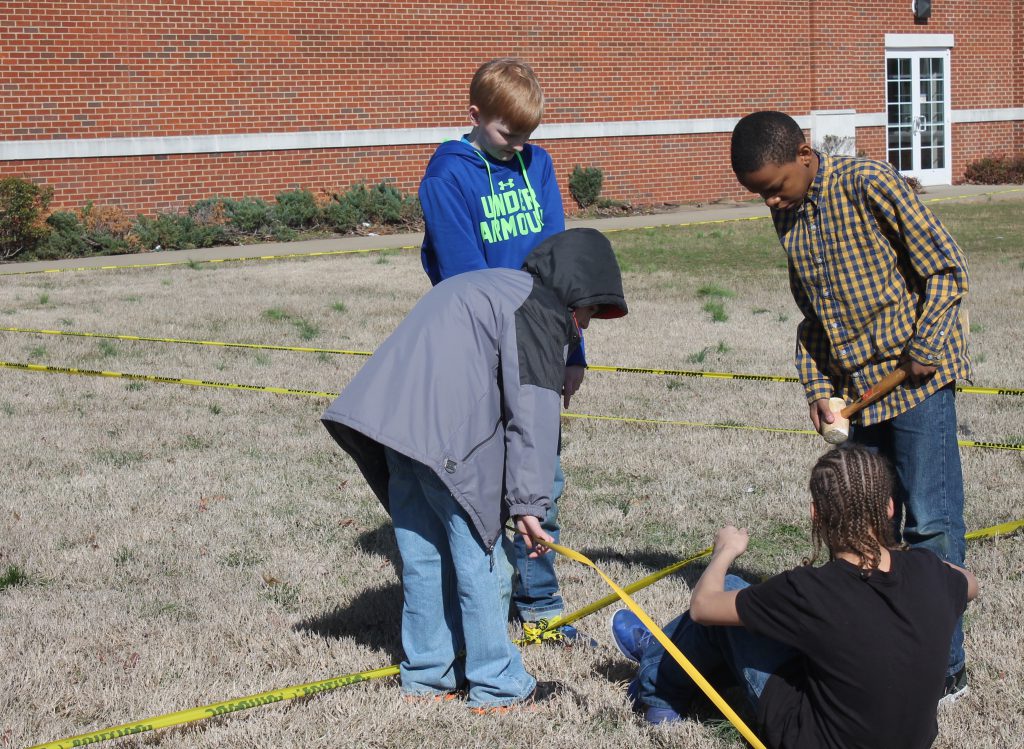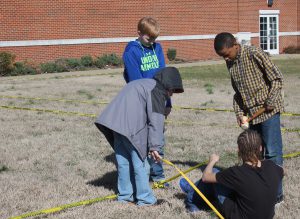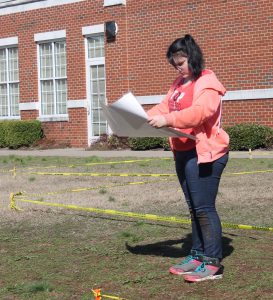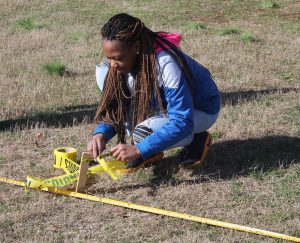
Students at John Pittard Elementary were outside mapping house plans last week after spending weeks focusing on ratio and proportional relationships in real-life form. This hands-on project is part of the 6th grade curriculum standards for mathematical practice and brings engineering to life.
During this project, JPE students focus on the importance of teamwork while designing their dream homes. Students bring their designs to life from original sketches drawn on graph paper. This four-step project starts with the basic sketch, which goes to a blue print where they choose their scale and proportion, then students stake out their house plans on the lawn outside the school. In the final phase of the project, students work on spatial reasoning and go back to the classrooms to take their 2D drawings to 3D design.
“What’s great about this project is that you can take students who may be struggling in math and they still get a huge lesson out of this. They get to see that they can do math. It’s hands on and much more concrete. It’s a true confidence builder,” says sixth grade math teacher Molly Oliver.
When the students are staking their house plans, they grasp the concept of engineering and architecture. Students learn that right angles are much easier to draw on graph paper than to create with stakes and structures. Oliver teaches the students the 3-4-5 method to show the importance of a perfect right-angle, otherwise known as the Pythagorean Theorem.
“This project gives students the freedom to dream and think about what they would really love to have in a house, and then build it,” says Oliver. “If your walls aren’t straight, when you get to the doorway, those walls aren’t going to meet. The right angle is going to determine whether the wall is going to be straight or not.”
JPE students created a total of 15 house plans utilizing over 400 stakes and 10,000 feet of caution tape. Students at Discovery School also created house plans in a similar format.


